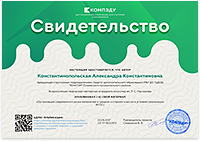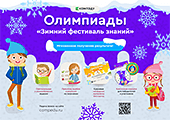ГУО «Средняя школа №14 г. Солигорска»
План-конспект открытого урока
английского языка в 6 классе
то теме «»
Коммуникативная ситуация
«Поход в кино»
Учитель английского языка
Второй квалификационной категории
Бурта Данута Михайловна
Солигорск, 2018
Тема: Книги и фильмы
Урок 11 «Поход в кино»
Цель: развивать навыки говорения в рамках коммуникативной ситуации по теме
Задачи:
- развивать лексические и грамматические навыки говорения в коммуникативной ситуации «Поход в кино»;
- развивать навык диалогической речи
- организовать использование при составлении диалога лексических структур «Would you like?», «to be going to»
- формировать познавательную активность учащихся;
- содействовать сотрудничеству в классе
Планируемый результат: планируется, что к концу урока дети смогут составить и разыграть диалог в рамках коммуникативной ситуации «Поход в кино»
Оборудование урока:
- Английский. Учебное пособие для 6-го класса. Авторы: Н.В. Юхнель, Е.Г. Наумова, Е.А. Родовская.
- Английский. 6-й класс. Рабочая тетрадь 2. Часть 2. Авторы: Н.В. Юхнель, Е.Г. Наумова, Е.А. Родовская.
- карточки с лексикой по теме «Книги и фильмы»
- постеры различных фильмов для введения в коммуникативную ситуацию
- карточки для составления диалога
- аудиозаписи и средства аудио воспроизведения
Books and Films
Lesson 11 "Going to the movies"
Purpose: to develop speaking skills in the context of a communicative situation on the topic
Tasks:
- develop lexical and grammatical skills of speaking in the communicative situation "Going to the cinema";
- develop the skill of dialogical speech
- organize the use of lexical structures "Do you want?", "to be going to"
- to form cognitive activity of students;
- to promote cooperation in the class
Expected result: it is planned that by the end of the lesson children will be able to compose and play a dialogue in the context of the communicative situation "Going out"
Lesson equipment:
- English. Textbook for the 6th grade. Authors: Н.В. Yukhnel, E.G. Naumova, E.A. Rodovskaya.
- English. 6 th grade. Workbook 2. Part 2. Authors: N.V. Yukhnel, E.G. Naumova, E.A. Rodovskaya.
- cards with the vocabulary on the topic "Books and films"
- posters of various films for introduction into a communicative situation
- cards for dialogue
- control and management
Lesson plan
| Stages of the lesson | Time | Didactical task | The content of the lesson phase | Teacher Activities | Pupils’ activity |
| I. Organizing stage | 1-2 | Preparing pupils for the lesson, stating the theme of the lesson, the goals, the formation of motivation | Greeting
Speech Warm-up | Greet pupils
Do you often go to the cinema or you prefer watching films at home. Please, explain your answer. ex.1 Look at the picture and answer the questions | Greet Teacher
Pupils answer for teachers questions.
|
| II. Phonetic workout
| 1-3 | Control and activation of vocabulary on the topic and grammar | Phonetic workout
| Riddles about different types of films.
1. a film with light and humorous character, with a happy or cheerful ending (comedy) 2. film that focuses on a detective-hero’s investigation into the mystery surrounding a crime (detective film) 3. a genre of film that typically use their action scenes to display and explore exotic locations in an energetic way (Adventure film) 4. genre of films which tell stories about life of cowboys or gunfighter armed with a revolver and a rifle who rides a horse (Western) 5. love stories, or affairs of the heart that center on passion, emotion, and the romantic, affectionate involvement of the main characters (usually a leading man and lady), and the journey that their love takes through courtship or marriage. (Romantic films) | Pupils guess the riddles and try to make their own riddles
|
| III. Listening, reading | 5-10 | Motivate the need to read the text
improve listening skills
improve reading skills
| Talking with pupils before listening/ reading the text
Listening
Reading the conversations
| How can we invite our friends to go somewhere?
ex.2a Where’re the children goin? Listen to the conversation.
ex.2b
reading by the roles Read the conversation and answer the questions after them | talk to a friend in person, call a friend on the phone, write a massage (SMS or e-mail), and ect.
Pupils listen the conversations and answer the questions
Pupils read the conversations answer the questions
|
| IV. Moving activity | 3-5 | to change the type of activity, to give a rest | Active workout | I have a small video for you Watch it carefully, because I have a task for you after it
I hope you listened attentively, each of you has a part of this dialogue, get up and put it in the right order on the board |
|
| V. Speaking | 10-15 | improve speaking skills
| making the own dialogue | ex.3 For this exercise, come to me, -divide into groups of 5, -divide into groups of 4 -divide into groups of 3
OK, we have 3 groups of 3 pupils
Now you will form a dialogue, two from the group will play the dialogue at the end of the lesson, the third one is an expert select an expert Experts, come to me, choose an envelope with the task
you have5-7 minutes to make the dialogue then I’ll check you |
pupils divide into groups
pupils make up dialogue
pupils present their dialogues |
| VI. Round-up | 1-3 | check the knowledge of children at the end of the lesson
| Summing up the lesson
Marking out | What did we do in the lesson? What did you do good? What did not work out for you? Why do you think?
Experts, help me, what marks would you put to your classmates? | pupils answer teachers questions
|
| VII. Homework | 1-2 | to explain homework | explanation of homework | WB ex2 | write down the homework in their diaries |
| VIII. Reflection | 3-5 | check the emotional state of pupils at the end of the lesson | Checking the emotional state | “Ladder of feelings” How do you feel in the end of the lesson? Put your sticker on the step with a smile
And now I have some presents for you, thank you for the lesson. Goodbye! |
pupils do the teacher’s task |





